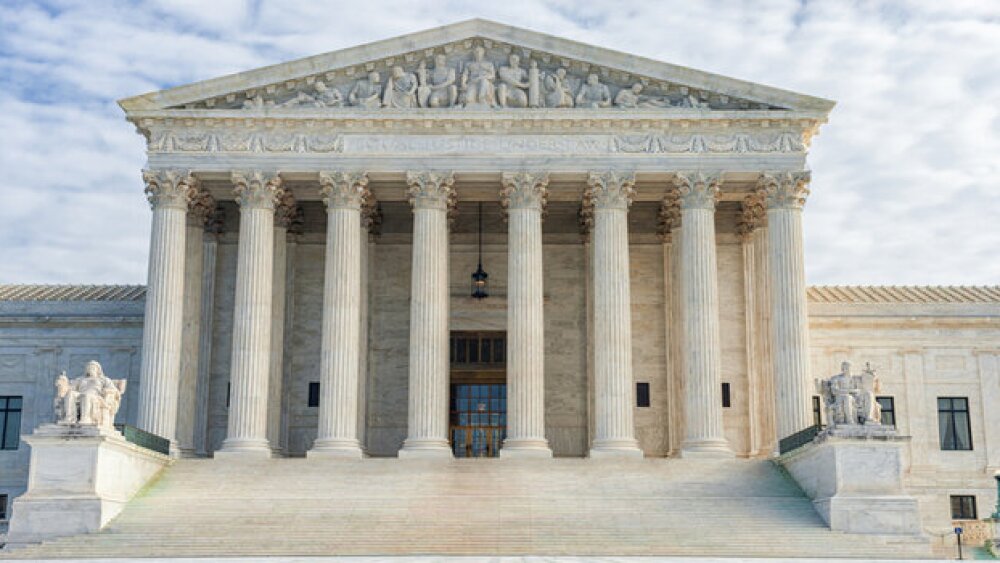TAKHZYRO is the first approved modern therapy for the preventive treatment of hereditary angioedema (HAE) in patients 12 years and older in China1

- TAKHZYRO is the first approved modern therapy for the preventive treatment of hereditary angioedema (HAE) in patients 12 years and older in China1
- TAKHZYRO is a subcutaneous injection that took the majority of patients one minute or less to self-administer2
SHANGHAI & OSAKA, Japan--(BUSINESS WIRE)-- Takeda Pharmaceutical Company Limited (TSE:4502/NYSE:TAK) (“Takeda”) today announced that China’s National Medical Products Administration (NMPA) has approved TAKHZYRO® (lanadelumab) subcutaneous injection for prophylaxis to prevent attacks of hereditary angioedema (HAE) in patients 12 years and older.1 TAKHZYRO is a fully human monoclonal antibody (mAb) that inhibits the activity of plasma kallikrein, an enzyme which is uncontrolled in people with HAE, to help prevent HAE attacks.3
“The approval of TAKHZYRO is exciting news for the HAE community in China,” said Fiona Wardman, the Chief Regional Patient Advocate at Hereditary Angioedema International. “HAE is a severe, potentially fatal genetic condition that causes unpredictable, painful, and debilitating swelling attacks. Until now, no modern therapies have been available to HAE patients in the country, and people with HAE rely on anabolic androgens and tranexamic acid for prophylaxis, and fresh frozen plasma for emergencies. The availability of TAKHZYRO to help prevent HAE attacks represents significant progress for those living with this chronic condition.”
HAE is a rare, genetic disorder estimated to affect about 1 in 50,000 people worldwide.4 The condition results in recurring attacks of oedema (swelling) in various parts of the body, including the abdomen, face, feet, genitals, hands and throat, that can be debilitating and painful. Laryngeal attacks that obstruct the airways are potentially life-threatening due to the risk of asphyxiation.5,6
“This milestone demonstrates Takeda’s ongoing commitment to support the HAE community globally, as we work to expand access to TAKHZYRO and potentially 14 more highly innovative Takeda medicines to China’s patients over the next five years,” said Sean Shan, President of Takeda China. “The Chinese government’s recent healthcare reforms play an evolving role in reaccelerating the delivery of important therapies like TAKHZYRO to as many patients as possible through their efforts to increasingly reward innovation.”
In the 26-week Phase 3 HELP (Hereditary Angioedema Long-term Prophylaxis) Study™, which included 125 people with HAE, TAKHZYRO reduced the mean number of monthly HAE attacks by 87% relative to placebo when administered at 300 mg every two weeks and 73% relative to placebo when administered at 300 mg every four weeks (adjusted P<0.001). A prespecified, exploratory analysis showed that over the entire 26-week study (days 0-182), 44% (n=12/27) of patients taking TAKHZYRO 300 mg every two weeks were attack-free vs. 2% (n=1/41) of patients taking placebo. A post-hoc sensitivity analysis showed that 77% (n=20/26) of the patients receiving TAKHZYRO 300 mg every two weeks were attack-free during a steady-state (day 70-182) vs. 3% of patients on placebo (n=1/37).3 The most commonly reported treatment-emergent adverse events (excluding HAE attacks) in patients treated with TAKHZYRO during the entire treatment period were injection site pain (42.9%), viral upper respiratory tract infection (23.8%), headache (20.2%), injection site erythema (9.5%), injection site bruising (7.1%), and dizziness (6.0%). Most treatment-emergent adverse events (98.5%) were mild to moderate in severity.3 The HELP Study™ is the largest randomised, controlled clinical prevention study conducted to date in HAE.
TAKHZYRO has a half-life of approximately two weeks and may be self-administered as one subcutaneous injection every two weeks, only after training by a healthcare professional.3 The recommended starting dose is 300 mg every two weeks. A dosing interval of 300 mg TAKHZYRO every four weeks is also effective and may be considered if the patient is well-controlled (e.g., attack free) for more than six months. In clinical trials, the majority of patients took within 10 to 60 seconds to administer the injection.2
TAKHZYRO is currently available in more than 20 countries and additional regulatory submissions are ongoing worldwide.
About TAKHZYRO® (lanadelumab)
TAKHZYRO® (lanadelumab) is indicated for prophylaxis to prevent attacks of hereditary angioedema (HAE) in patients 12 years and older. TAKHZYRO is a fully human monoclonal antibody that specifically binds and decreases plasma kallikrein activity. TAKHZYRO is produced in Chinese Hamster Ovary (CHO) cells by recombinant DNA technology.2
TAKHZYRO is formulated for subcutaneous administration and has a half-life of approximately two weeks in patients with HAE. TAKHZYRO is intended for the self-administration or administration by a caregiver, only after training by a healthcare professional.3
TAKHZYRO is not intended for the treatment of acute HAE attacks.
TAKHZYRO Safety Information for China
TAKHZYRO is indicated for prophylaxis to prevent attacks of hereditary angioedema (HAE) in patients 12 years and older.1
TAKHZYRO treatment should be initiated under the supervision of a physician experienced in the management of patients with hereditary angioedema (HAE). TAKHZYRO may be self-administered or administered by a caregiver only after training on SC injection technique by a healthcare professional.
Contraindications
Allergy to any ingredients in TAKHZYRO.
Precautions
Hypersensitivity reactions have been observed. In case of a severe hypersensitivity reaction, discontinue TAKHZYRO administration and institute appropriate treatment. TAKHZYRO is not indicated for treatment of acute HAE attacks.
Adverse Reactions
The most commonly observed adverse reactions (≥10% and higher than placebo) associated with TAKHZYRO were injection site reactions consisting mainly of pain, erythema, and bruising at the injection site; upper respiratory infection; headache; rash; myalgia; dizziness; and diarrhea. Less common adverse reactions observed included elevated levels of transaminases; one patient discontinued the trial for elevated transaminases.2,3
Use in Specific Populations: The safety and efficacy of TAKHZYRO in pediatric patients <12 years of age have not been established.2
No data are available on TAKHZYRO in pregnant women. No data are available on the presence of lanadelumab in human milk or its effects on breastfed infants or milk production.2
About Takeda Pharmaceutical Company Limited
Takeda Pharmaceutical Company Limited (TSE:4502/NYSE:TAK) is a global, values-based, R&D-driven biopharmaceutical leader headquartered in Japan, committed to bringing Better Health and a Brighter Future to patients by translating science into highly-innovative medicines. Takeda focuses its R&D efforts on four therapeutic areas: Oncology, Rare Diseases, Neuroscience, and Gastroenterology (GI). We also make targeted R&D investments in Plasma-Derived Therapies and Vaccines. We are focusing on developing highly innovative medicines that contribute to making a difference in people's lives by advancing the frontier of new treatment options and leveraging our enhanced collaborative R&D engine and capabilities to create a robust, modality-diverse pipeline. Our employees are committed to improving quality of life for patients and to working with our partners in health care in approximately 80 countries.
For more information, visit https://www.takeda.com.
Important Notice
For the purposes of this notice, “press release” means this document, any oral presentation, any question and answer session and any written or oral material discussed or distributed by Takeda Pharmaceutical Company Limited (“Takeda”) regarding this release. This press release (including any oral briefing and any question-and-answer in connection with it) is not intended to, and does not constitute, represent or form part of any offer, invitation or solicitation of any offer to purchase, otherwise acquire, subscribe for, exchange, sell or otherwise dispose of, any securities or the solicitation of any vote or approval in any jurisdiction. No shares or other securities are being offered to the public by means of this press release. No offering of securities shall be made in the United States except pursuant to registration under the U.S. Securities Act of 1933, as amended, or an exemption therefrom. This press release is being given (together with any further information which may be provided to the recipient) on the condition that it is for use by the recipient for information purposes only (and not for the evaluation of any investment, acquisition, disposal or any other transaction). Any failure to comply with these restrictions may constitute a violation of applicable securities laws.
The companies in which Takeda directly and indirectly owns investments are separate entities. In this press release, “Takeda” is sometimes used for convenience where references are made to Takeda and its subsidiaries in general. Likewise, the words “we”, “us” and “our” are also used to refer to subsidiaries in general or to those who work for them. These expressions are also used where no useful purpose is served by identifying the particular company or companies.
Forward-Looking Statements
This press release and any materials distributed in connection with this press release may contain forward-looking statements, beliefs or opinions regarding Takeda’s future business, future position and results of operations, including estimates, forecasts, targets and plans for Takeda. Without limitation, forward-looking statements often include words such as “targets”, “plans”, “believes”, “hopes”, “continues”, “expects”, “aims”, “intends”, “ensures”, “will”, “may”, “should”, “would”, “could” “anticipates”, “estimates”, “projects” or similar expressions or the negative thereof. These forward-looking statements are based on assumptions about many important factors, including the following, which could cause actual results to differ materially from those expressed or implied by the forward-looking statements: the economic circumstances surrounding Takeda’s global business, including general economic conditions in Japan and the United States; competitive pressures and developments; changes to applicable laws and regulations; the success of or failure of product development programs; decisions of regulatory authorities and the timing thereof; fluctuations in interest and currency exchange rates; claims or concerns regarding the safety or efficacy of marketed products or product candidates; the impact of health crises, like the novel coronavirus pandemic, on Takeda and its customers and suppliers, including foreign governments in countries in which Takeda operates, or on other facets of its business; the timing and impact of post-merger integration efforts with acquired companies; the ability to divest assets that are not core to Takeda’s operations and the timing of any such divestment(s); and other factors identified in Takeda’s most recent Annual Report on Form 20-F and Takeda’s other reports filed with the U.S. Securities and Exchange Commission, available on Takeda’s website at: https://www.takeda.com/investors/reports/sec-filings/ or at www.sec.gov. Takeda does not undertake to update any of the forward-looking statements contained in this press release or any other forward-looking statements it may make, except as required by law or stock exchange rule. Past performance is not an indicator of future results and the results or statements of Takeda in this press release may not be indicative of, and are not an estimate, forecast, guarantee or projection of Takeda’s future results.
1 TAKHZYRO China Prescribing Information. 2020.
2 TAKHZYRO (lanadelumab-flyo) [prescribing information]. Lexington, MA: Shire LLC; 2018.
3 Banerji A, Riedl MA, Bernstein JA, et al; for the HELP Investigators. Effect of lanadelumab compared with placebo on prevention of hereditary angioedema attacks: a randomized clinical trial. JAMA. 2018;320(20):2108-2121.
4 Cicardi M, Bork K, Caballero T, et al, on behalf of HAWK (Hereditary Angioedema International Working Group). Evidence-based recommendations for the therapeutic management of angioedema owing to hereditary C1 inhibitor deficiency: consensus report of an International Working Group. Allergy. 2012;67(2):147-157.
5 Longhurst HJ, Bork K. Hereditary angioedema: causes, manifestations, and treatment. Br J Hosp Med. 2006;67(12):654-657.
6 Banerji A. The burden of illness in patients with hereditary angioedema. Ann Allergy Asthma Immunol. 2013;111(5):329-336.
View source version on businesswire.com: https://www.businesswire.com/news/home/20201207005961/en/
Media Contacts:
Japanese Media
Kazumi Kobayashi
kazumi.kobayashi@takeda.com
+81 (0) 3-3278-2095
Media outside Japan
Emily Bunting
emily.bunting@takeda.com
+41 79 866 9703
Source: Takeda Pharmaceutical Company Limited
View this news release online at:
http://www.businesswire.com/news/home/20201207005961/en





